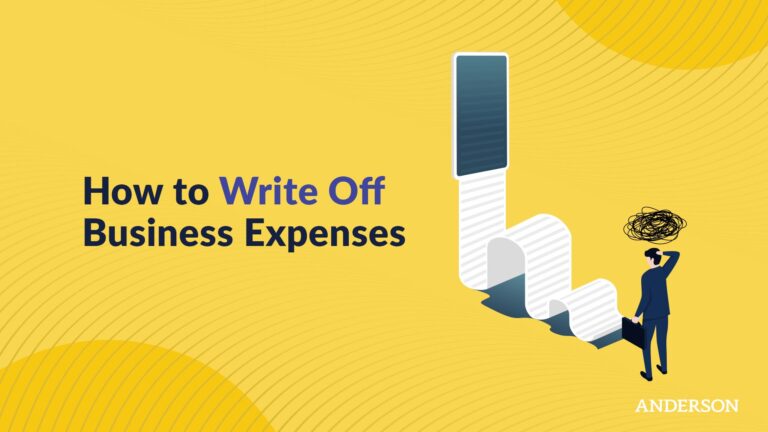Updated October 4, 2021
Nearly all Americans have to pay an income tax throughout the course of their working life. During retirement, man look forward to a life without the stress and worries of their career. But what if you could also enjoy a retirement free from taxes? The good news is that it is possible to have a tax free retirement.
4 Ways to Have a Tax-Free Retirement
- Roth IRA
- Roth 401(k) and 403(b)
- Health Savings Accounts
- Municipal Bonds
Many of the taxes that people pay during their working lives, such as FICA taxes, are actually meant to help fund their own retirement. For most Americans, 6.2 percent of their income will go directly toward Social Security, while 1.45 percent will go toward funding Medicare. The taxes you pay towards the programs now provide cash assistance and medical insurance for individuals who have already retired. Once you retire, the FICA taxes paid by tomorrow’s workforce will (hopefully) fund your retirement.
It’s all nice in theory. At least it would be if it weren’t for several complicated issues, like a rapidly growing retirement population and longer life expectancies. This can impact the worker to beneficiary ratio and cause a fund shortage.
But even if Social Security worked flawlessly, you do not want to only rely on Social Security payments to fund your retirement. Social Security benefits are taxable, and if you receive $34,000 annually, half of it is subject to the federal income tax. If you receive more than that, your benefits could be taxed up to 85 percent. Moreover, some states also impose state taxes on Social Security income.
The good news is that with proper planning, anybody can enjoy tax-free income during retirement.
Free Strategy Session with an Anderson Advisor
Receive a detailed risk assessment to assist in lowering problem areas that could wipe out all of your assets with one wrong move. Speak with an Anderson Professional Advisor to get your FREE Strategy Session. Limited-Time offer: FREE (a $750 value.)
4 Ways to Have a Tax Free Retirement
Roth IRAs
A Roth IRA (Independent Retirement Account) is a self-directed investment account. Your money is taxed upfront (when you deposit it), not as it grows in the account or when it is withdrawn, so long as the withdrawals meet certain requirements.
Incidentally, if you’re wondering where the name comes from, its namesake was Senator William Roth, who helped create the Taxpayer Relief Act of 1997.
There are restrictions to how much you can contribute to a Roth IRA per year. The limit is $6,000 for anyone under the age of 50, and $7,000 for those over 50. For single tax filers, your modified adjusted gross income (MAGI) must be less than $139,000, and for married joint filers, the MAGI must be less than $206,000. If you’re in a higher tax bracket, you cannot contribute to a Roth IRA.
Generally, the money that goes into a Roth IRA is invested in mutual funds, but since it is self-directed, the investor can choose to purchase other securities, like stocks, bonds, and commodities, without worrying about capital gains tax.
For those who are over the age of 59.5, direct contributions can be withdrawn penalty-free at any time, but the fund’s earnings must wait five years before the investor can take penalty-free withdrawals.
Unlike a Roth 401K, you do not have to start taking distributions once you turn 70.5, but if you do, they are tax free. A retiree can also use their Roth IRA to pass on wealth to their children or spouse without subjection to estate taxes.
Finally, a distribution from a Roth IRA will not be factored into your gross adjusted income by the Social Security Administration, which means that withdrawals will not put you in a higher tax bracket for Social Security benefits.
Roth 401(k) and 403(b)
A Roth 401(k) is an employer-sponsored retirement plan that has a similar tax benefit to a Roth IRA in terms of retirement planning. For individuals in non-profit or public education, there is the Roth 403(b) retirement benefit plan.
You will have to pay taxes on contributions as you make them, but after that, they can grow in a tax-sheltered account.
Unlike the $6,000 annual contribution limit for a Roth IRA, the limit for a Roth 401k or 403(b) is much higher ($19,500). Individuals over the age of 50 can make an additional catch-up contribution of $6,500 per year.
The Roth 401(k) or 403(b) is a fairly attractive option for working individuals because there are higher limits in terms of what you can contribute annually. There are also no tax bracket limits.
Many companies have contribution matching policies, sometimes as high as six percent. This means that the company will match your contributions dollar for dollar if you invest in the account. Most company matching policies are generally $50 to the dollar up to three percent.
Unlike a Roth IRA, once you turn 70.5 years of age, you will be required to start taking distributions from your Roth 401k or 403(b). The amount you receive can increase your gross income, which in turn could mean higher taxes on your Social Security income as well.
In general, as long as you are older than 59.5 years of age and the account is at least five years old, your distributions will not be taxed. You can also turn your Roth 401k into a rollover IRA if you switch companies or leave the workforce.
Health Savings Accounts
A health savings account (HSA) is a type of savings account where you can deposit money before taxation. Most HSAs are offered by employers, but it is possible to open one of your own if your insurance company sponsors it and you have a high-deductible health plan (HDHP). Usually, this means your deductibles are more than $1,400 for singles and $2,800 for families.
You can use your HSA to pay for medical expenses, like doctor’s visits, prescription drug copays, medical supplies, and prescription eyewear. Annual contribution limits are $3,550 for singles and $7,100 for families. Seniors over the age of 55 are allowed an additional catch-up contribution of $1,000 per year.
An HSA can be a great way to maximize cash reserves to pay for medical expenses, but unlike a Roth IRA or 401k, the money is not invested in securities or mutual funds for growth. In this regard, the HSA should be viewed as more of a savings account, but it’s one that has tax-saving benefits.
Municipal Bonds
Bonds are certificates that signify an individual has lent money to the government. Municipal bonds are sold by local governments to fund public works, like transportation infrastructure, parks and recreation projects, and education.
Over a fixed period of time, the bond produces a profit in the form of interest. The income earned on municipal bonds is tax-free, at least from federal taxation.
This is Uncle Sam’s way of thanking you for investing in your local community, but it’s important to keep in mind that some states do charge a state tax on any profits earned through bond investments.
You also need to remember that municipal bonds only yield tax-free earnings if you buy them directly from the government. If you buy them from a secondary market, you will have to pay taxes on the earnings.
The return on municipal bonds is generally lower than what you might see from the stock market over the same period of time, though they are more stable. Bonds can be a great investment in the years prior to retirement, but you will not be able to bankroll your way to a nest egg with a bond-heavy strategy over the course of several decades.
Is Social Security Taxable?
The short answer is yes, a Social Security benefit payment is taxable by up to 50 percent of your benefits if your income is anywhere between $25,000 and $34,000, and up to 85 percent of your income if it is more than $34,000.
If you are receiving Social Security benefits as a couple, then those numbers will change to 50 percent of your income between $32,000 and $44,000, and 85 percent if you are collecting more than $44,000.
Again, distributions from a Roth IRA do not factor into your gross adjusted income, so that can be a way to keep your Social Security tax burden low.
You may have heard that Social Security is not taxable, but that’s only true for Social Security Insurance, which is a monthly cash benefit paid to low-income individuals.
Social Security Insurance should not be confused with Social Security for Retirement. Incidentally, SSDI (Social Security Disability Insurance) is also taxable.
What are Annuities? Are Annuities Taxable?
Some individuals choose to take out a permanent life insurance policy, with many using it as a retirement savings account once the insurance term has expired.
When it comes to permanent life insurance, policyholders pay premiums into a fund that will pay their beneficiaries in the event that they die before the policy term has been reached. Once the term ends, the policyholder can opt to receive annuities from the fund they paid into. This means that the insurance company has to pay you, either at regular intervals or in lump sums. Many people choose to activate annuity payments once they reach retirement age.
Fixed annuities offer a guaranteed payment amount, while a variable annuity may be higher or lower than expected, depending on the performance of the underlying portfolio. Indexed annuities fall somewhere in between.
While annuity payouts are not taxed like ordinary income, they are still a taxable income. The tax rate depends on a variety of factors based on how the account was set up. It’s best to consult with someone familiar with your state’s tax law for more information.
In short, you might consider an annuity a tax-deferred source of income as it grows, but not tax-free.
What is a Pension? Are Pensions Taxable?
Some companies and government organizations, like the military, offer their employees and service members a pension plan. This type of qualified retirement plan differs from a traditional IRA in that the company puts money aside for the retiree, who will then receive retirement income as a gift from the company for their service.
While the pension might avoid state tax in select states, it will be subject to a federal tax, especially if the company made a 100 percent cash value contribution. Therefore, pension income is not considered tax free income.
Start Your Tax-Free Retirement Planning Today!
The accounts and strategies outlined above are some great tax-free investments that can build assets for a tax-free retirement. If you carefully strategize and diligently follow your retirement savings plans, you may even have the option to take an early retirement.
There are many options available when it comes to funding and investing in your retirement. Why not focus your energies on the tax-free ones? This will ensure that that you can enjoy your golden years without worrying about government tax obligations.
Bonus Video
3 Steps to Create an Invisible Investor Strategy
 The greatest mistake that people make when it comes to asset protection for real estate is not understanding the risks that are waiting out there for them. This eBook reveals the structure you should follow to ensure your hard earned money is protected from frivolous lawsuits and costly tax mistakes.
The greatest mistake that people make when it comes to asset protection for real estate is not understanding the risks that are waiting out there for them. This eBook reveals the structure you should follow to ensure your hard earned money is protected from frivolous lawsuits and costly tax mistakes.















